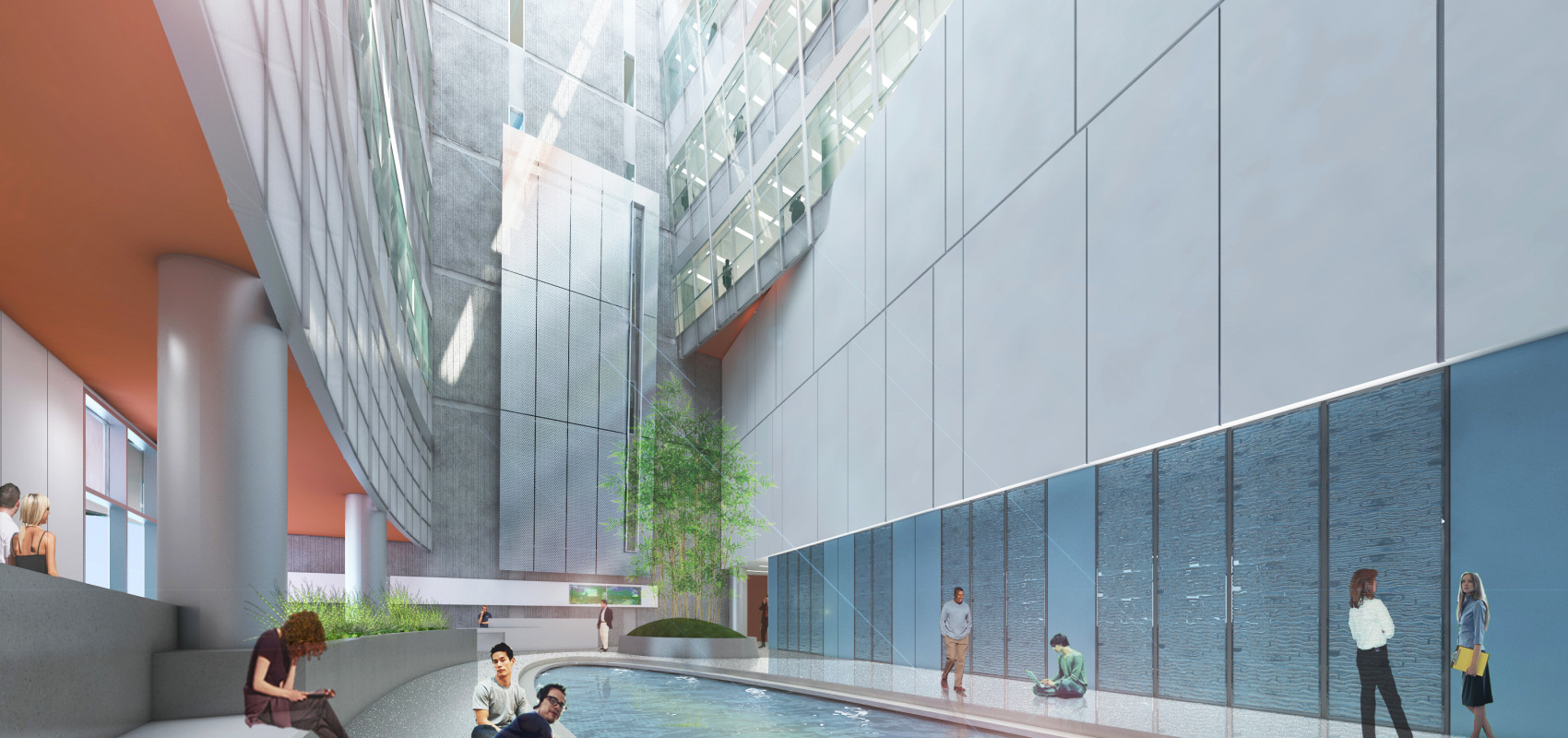United Therapeutics located in Silver Spring, MD, plans to open a net-zero energy building, the Unisphere, this month. The 125,000-square-foot building contains office spaces, virtual laboratories, retail, and an additional 75,000 square-foot parking structure. To reach the net-zero goal, the building will use 75% less energy than equivalent buildings in the areas and will be powered by onsite photovoltaics. The building orientation has been optimized for daylighting, natural ventilation, and renewable energy production. Innovative measures such as passive ventilation and an “Earth labyrinth” will move air through a maze of thermal mass for cooling or heating utilizing stable ground temperatures before distributing it to occupied areas.
 On average, geo-exchange (also known as ground source heat pump or geothermal heat pump) systems use 25-50% less electricity than conventional heating or cooling system, depending on the season. At the Unisphere, the heating and cooling is separated from the ventilation, using a geo-exchange system with a water-to-water heat pump and an air handling unit (AHU) with energy recovery connected to an active chilled bean system.
On average, geo-exchange (also known as ground source heat pump or geothermal heat pump) systems use 25-50% less electricity than conventional heating or cooling system, depending on the season. At the Unisphere, the heating and cooling is separated from the ventilation, using a geo-exchange system with a water-to-water heat pump and an air handling unit (AHU) with energy recovery connected to an active chilled bean system.
While the team did benchmark the building against other buildings during the design process, they were more concerned with continuous performance improvement. “When you’re designing a highly sustainable building, you don’t compare against others. You ask, ‘How can we improve upon the last modeling iteration for this design?’ and make final decisions based on that,” stated Jason Fierko, Principal and the project’s Net Zero coordinator at EwingCole.
The Unisphere’s geo-exchange technology is fairly simple – use the earth as a sink to store energy through the year by circulating water through pipes buried in the ground. Water travels through pipes that are drilled 500 feet into the earth to either reject or absorb heat based on the time of year; taking advantage of earth’s consistent temperature. The water is then further heated or cooled to the design temperature using a highly efficient water-to-water heat pump and then pumped to the chilled beams for cooling or to perimeter radiators for heating.
In the occupied space, air from the AHU passes over the chilled beam, to provide the proper ventilation levels to “activate” the bean. The savings come in large part because using water to move and remove heat in a building is inherently more efficient than using air. The AHU provides 100% of the minimum code ventilation requirements separately from heating and cooling systems by pulling outside air across a filter and then through a tempering coil and dual energy recovery system to supply dehumidified air to the space. Fresh air from the outdoors exchanges energy with the tempered exhaust air through an enthalpy wheel to reduce heating and cooling loads.
The project included other innovative measures such as increased insulation, triple-paned glazing system, shallow floor plates, a storm water heat recovery system, chilled beams, thermal pool, and automated natural ventilation. To reach net-zero, the facility is supported by a 1 MW solar array of nearly 3,000 solar panels surrounding all elevations and roofs. Fierko exclaims, “It’s a really, really exciting project. The Unisphere pushes the envelope for advanced buildings in the region. Our hot, humid summers and cold dry winters can be challenging for any buildings and this project illustrates that net-zero energy is possible here.”
